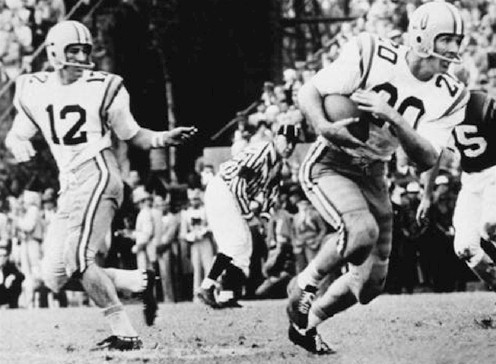


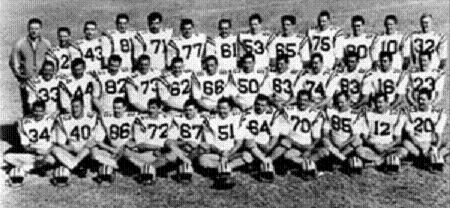
| at Rice (5-5) | 26-6 | #14 |
| (Mobile) Alabama (5-4-1) | 13-3 | |
| Hardin-Simmons (6-5) | 20-6 | |
| at Miami-Florida (2-8) | 41-0 | |
| Kentucky (5-4-1) | 32-7 | #24 |
| Florida (6-4-1) | 10-7 | #17 |
| Mississippi (9-2) | 14-0 | #11 |
| Duke (5-5) | 50-18 | |
| at Mississippi State (3-6) | 7-6 | |
| at Tulane (3-7) | 62-0 | |
| Sugar Bowl Clemson (8-3) | 7-0 | #19 |
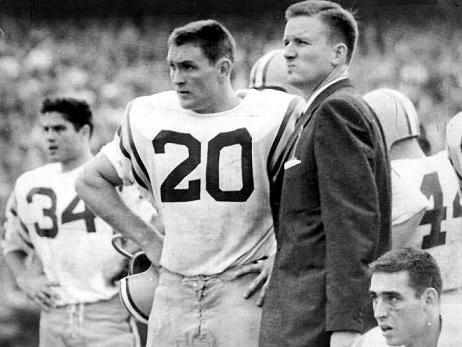
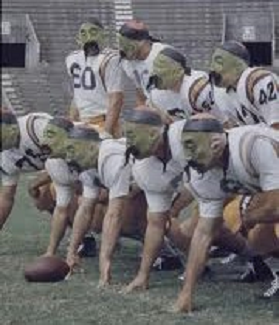
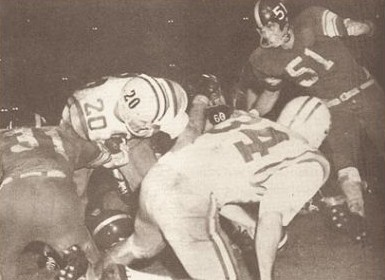
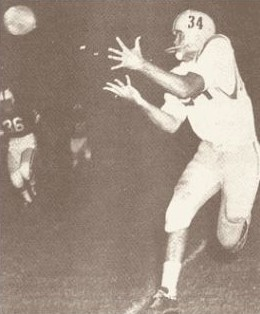
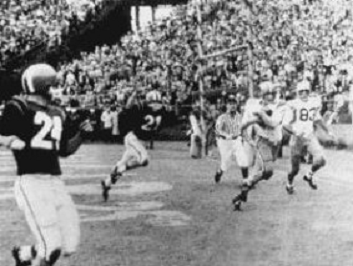
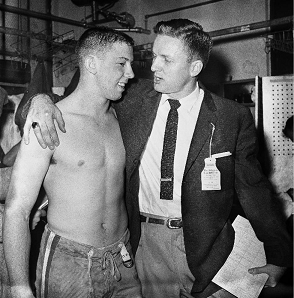
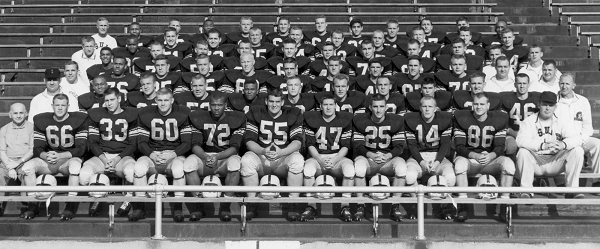
| Texas Christian (8-2-1) | 17-0 | #9 |
| Air Force (9-0-2) | 13-13 | #6 |
| Indiana (5-3-1) | 34-13 | #23 |
| at Wisconsin (7-1-1) | 20-9 | #7 |
| Northwestern (5-4) | 26-20 | #22 |
| at Michigan (2-6-1) | 37-14 | |
| at Minnesota (1-8) | 28-6 | |
| Ohio State (6-1-2) | 28-38 | #8 |
| Notre Dame (6-4) | 31-21 | #13 |
| Rose Bowl California (7-4) | 38-12 |
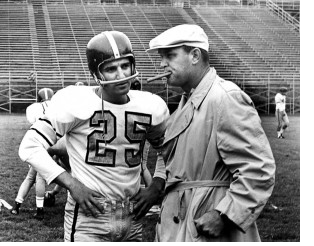 Iowa had gone 9-1 and posted a very strong argument for sharing an MNC with 10-0 Oklahoma in 1956,
falling just short in my estimation. I covered their Hall of Fame
coach, Forest Evashevski (pictured at left), in that national championship article. They were also strong in 1957 (7-1-1, #4), and here they are near the top again with an 8-1-1 record against a very
rough schedule that featured 7 top 25 opponents in 10 games, 4 of them
top 10. Iowa led the nation in total offense with 405.9 yards per game,
which is downright amazing when you consider that schedule.
Iowa had gone 9-1 and posted a very strong argument for sharing an MNC with 10-0 Oklahoma in 1956,
falling just short in my estimation. I covered their Hall of Fame
coach, Forest Evashevski (pictured at left), in that national championship article. They were also strong in 1957 (7-1-1, #4), and here they are near the top again with an 8-1-1 record against a very
rough schedule that featured 7 top 25 opponents in 10 games, 4 of them
top 10. Iowa led the nation in total offense with 405.9 yards per game,
which is downright amazing when you consider that schedule.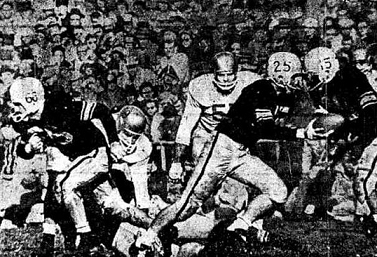
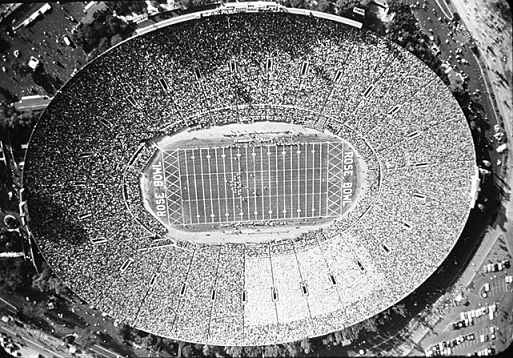
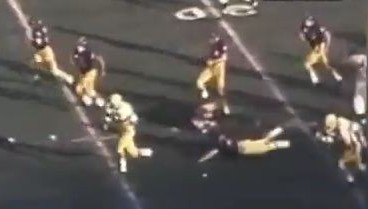
| Louisiana State 11-0 | Iowa 8-1-1 | ||||||||||||||||||||||||||||||||||||||||||||
|---|---|---|---|---|---|---|---|---|---|---|---|---|---|---|---|---|---|---|---|---|---|---|---|---|---|---|---|---|---|---|---|---|---|---|---|---|---|---|---|---|---|---|---|---|---|
|
|
||||||||||||||||||||||||||||||||||||||||||||
| 1) National Championship Foundation | 4.84 |
| 2) DeVold
(math system) |
4.79 |
| 3) Billingsley (math) | 4.78 |
| 4) Poling
(math) |
4.58 |
| 5)
College
Football Researchers Association |
4.57 |
| 6) Houlgate (math) | 4.53 |
| 7) Dunkel (math) | 4.47 |
| 8) Sagarin-ELO (math) | 4.32 |
| 9) AP Poll | 4.31 |
| 10) Sagarin (math) | 4.26 |
| 11) Litkenhous
(math) |
4.23 |
| 12) Helms Foundation | 4.21 |
| 13) Boand (math) | 4.20 |
| 14) Williamson (math) | 3.84 |
| 15) Berryman (math) | 3.38 |
| 1) Boand (math system) | 4.26 |
| 2) College Football Researchers Association | 4.22 |
| 3) Poling (math) | 4.11 |
| 4) Helms | 4.09 |
| 5) Sagarin-ELO (math) | 4.06 |
| 6) National Championship Foundation | 3.96 |
| 7) Dickinson (math) | 3.49 |
| 8) Houlgate (math) | 3.35 |
| 9) Billingsley (math) | 3.34 |
| 10) Sagarin (math) | 3.28 |
| 11) Parke Davis | 2.77 |
| 1) Houlgate (math system) | 4.5 |
| 2) Helms | 4.3 |
| 3) Parke Davis | 4.2 |
| 4) National Championship Foundation | 3.7 |
| 5) Billingsley (math) | 3.6 |